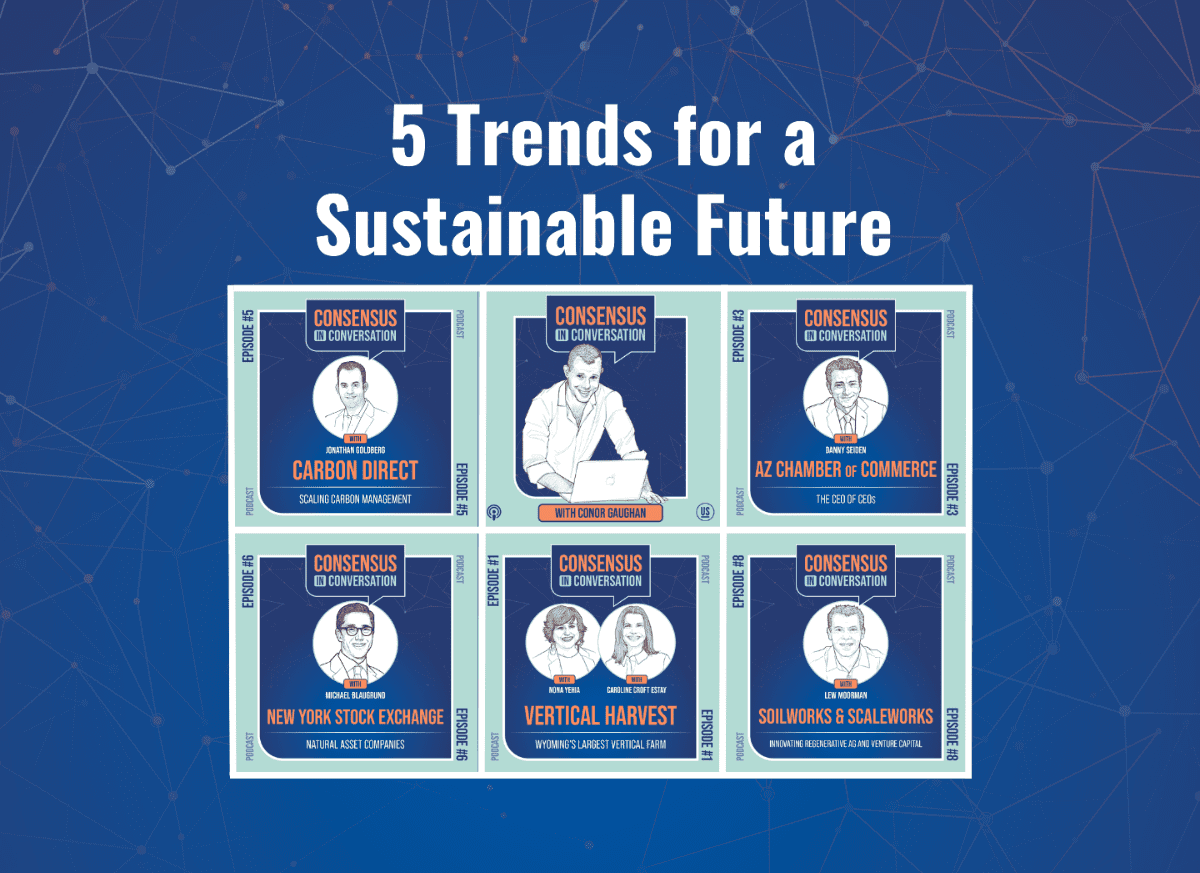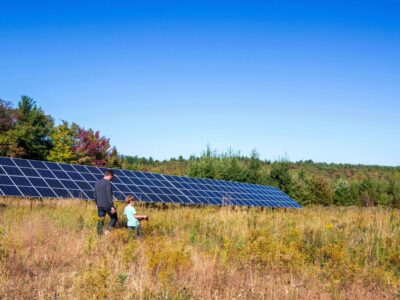2023. New Year, New Trends. And the world of sustainability will continue to lead the charge. 2022 undoubtedly marked a watershed moment in the transition to a sustainable economy and society, with the nation’s most prominent climate legislation in over 50 years. Now, that legislation will take effect, providing capital and invaluable benefits across the country. Local communities, states, companies, and investors are all primed to reap these rewards while helping the world move toward a more sustainable future. As the publisher at Consensus, I’ve had the privilege to cover countless stories of innovators proving that solving our planet’s most complex problems can align with incredible profit opportunities. These companies are helping to scale our decarbonization and conservation efforts. They are truly a testament to humanity’s ingenuity, and I am more confident that the world has the creativity, passion, and capital to create a better future for the next generation. Here are five of the most critical sustainability trends to keep an eye on as we enter 2023:

The Future of Investing in Ecosystem Services
The natural environment is the single most valuable set of resources to humanity. Still, trillions of dollars of worth are hard to tangibly grasp – leaving potential investors unaware of their ability to help conserve and even enhance these ecosystem services. Innovators like Carbon Direct are working on appraising nature’s benefits and are raising funding for them through tools like carbon credits. This concept allows firms to offset their GHG emissions by paying landowners to improve their surrounding environment’s carbon-capture potential (I talked about this subject in greater detail on my podcast). Michael Blaugrund and the NYSE are working to facilitate this vital carbon marketplace by classifying these landowners and organizations as Natural Asset Companies (NACs), which should help raise further capital (and awareness) while incentivizing investment. Keep an eye on the launch of these assets in 2023.

The Future of Farming
As the global population surges to 10 billion by 2050, agricultural innovators are developing environmentally-conscious farming techniques to provide enough natural resources for every person to thrive. To sustainably provide food at a large scale, regenerative ag, as invested in by Soilworks Natural Capital, is reintroducing indigenous grazing practices that improve soil nutrients and crop yields while strengthening the prairie’s role as a carbon sink. As shown by Vertical Harvest, hydroponic greenhouses conserve our water supply – utilizing 95% less of this critical resource than traditional agriculture – and allow farming to occur virtually anywhere in the world due to climate control tech. Agrovoltaics integrates agriculture with our solar power infrastructure in a mutually beneficial process that increases crop and electricity yields while reducing a facility’s physical footprint through its multi-use functionality. These three methods have a combined potential market value of almost $84 billion, so forward-thinking investors are likely to rush to provide the necessary capital to help the sustainable ag sector grow and eventually reap the benefits of a high ROI over the coming year.

Vroom – The Future of Auto
The passenger vehicles of the past contribute 16% of American greenhouse gas pollution. Meanwhile, automakers and consumers are clamoring for cleaner, cheaper, and better hybrid and electric vehicles. In response, government and private companies are collaborating to meet the mass consumer demand for EVs: a zero-emission alternative that could satisfy our travel needs while protecting the planet’s health. The passage of the Inflation Reduction Act (IRA) has laid the groundwork for an electric future by reducing the cost of EVs with “Clean Vehicle Credits” that are worth up to $7,500. This lower price has led to an unprecedented amount of interest in EVs, as an all-time sales record of 200,000 units was achieved in Q3. To meet this increased consumer demand, auto manufacturers are greatly expanding their EV production capabilities. Ford is investing almost $11.5 billion in their Blue Oval Plants (creating 11,000 jobs), while GM is spending $7 billion on its Ultium Cells factories (employing 4,000 workers). Watch as Hybrid EVs, and EVs take over the roadways while charging networks spread to retailers across the country.

The Future of American Clean Transportation Infrastructure
To more seamlessly transition into the decarbonization of transportation, America is investing in the prerequisite manufacturing footprint and daily-use infrastructure. The IRA also provides almost $370 billion of impact to this cause, and one of its most significant provisions binds “Clean Vehicle Credits” with domestic manufacturing by adding North American battery production and vehicle assembly as qualification requirements to receive federal funding. This strengthens our domestic supply chain by incentivizing companies to move their facilities to the US, thus, reducing our dependence on Chinese markets. The CHIPS and Science Act strengthens this effect by raising $53 billion in funding for semiconductor manufacturing (a critical component in EV chips). My conversation with the AZ Chamber of Commerce and Innovation’s Danny Seiden discusses the rise of clean energy innovation. The Infrastructure Investment and Jobs Act (IIJA) further amplifies the power of American manufacturing by providing $7 billion in funding for domestic battery production while raising $7.5 billion for the construction of 500,000 EV chargers and $10 billion for the electrification of public transit.

The Future of Corporate Ownership and Environmental Stewardship
Many corporations are becoming more aware of the massive amount of capital needed to scale decarbonization technologies and create a more sustainable future. You can gain a better sense of this from my podcast conversation with Jonathan Goldberg, founder, and CEO of Carbon Direct. As a result, everyone has been drafting carbon-neutral pledges; however, no company made a stronger commitment than Patagonia, which set a groundbreaking example. Founder Yvon Chouinard sacrificed almost all the profits he would have received from selling his $3 billion company when he handed over 98% of its ownership to the non-profit Holdfast Collective. They will provide $100 million a year to help protect our planet, supplying critical funding for decarbonization innovations. I’m excited to see the inevitable influence that Chouninard’s bold decision will have on the business community as we all band together in the fight against climate change.





